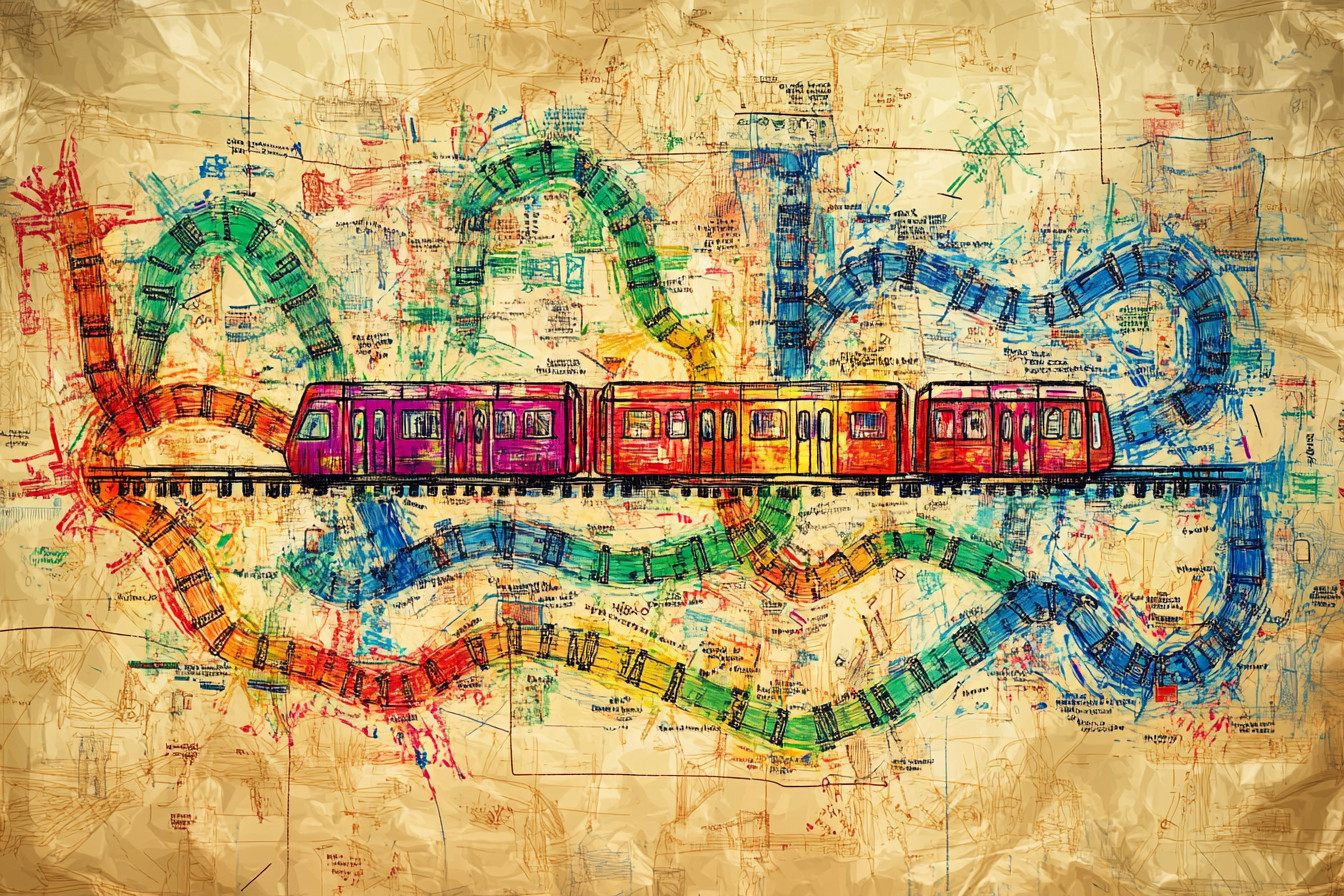When I started playing Ticket to Ride Europe, I understood right away that knowing the map well was essential. It’s not just about identifying where you must go—it’s about understanding the important pathways, bottlenecks, and heavily traveled spaces. Let’s explore why this is so vital.
The Importance of Choke Points in Ticket to Ride Europe
The Importance of Choke Points
One of my earliest mistakes was underestimating the importance of choke points. Some cities are connected by only one or two routes, and if those routes get blocked by an opponent, it can completely ruin your plans. Take the connection between Stockholm and Petrograd, for example — there are only two ways to make that connection: one is a double route (which isn’t always available depending on player count), and the other is a longer, more circuitous path. If you need to get into the eastern side of the map, securing one of these early can save you headaches later on.
I once had a ticket that connected Stockholm and Sevastopol. I got a little too relaxed claiming the route from Stockholm to Petrograd and then got blocked by a friend. I had to re-route in my mind and take a ludicrously circuitous way to get to Sevastopol that not only absorbed more train resources but also ended up drawing me more cards. I eventually failed to complete the ticket. So, the lesson here is: if you have a critical route you need to claim, don’t wait around and hope the path is still open. Identify it early and take it.
Managing Ferries and Tunnels Effectively
Ferries and tunnels bring unique challenges to risk management in Ticket to Ride Europe. They add a new dynamic to the game. To successfully navigate a tunnel, you have to use as many or more cards than you would for a normal route. If you’re like me, you play the game somewhere in the range between “kind of smart” and “poorly,” but you picked up on this pretty quickly. It’s a basic lesson. What’s less intuitive is the way ferries and locomotives interact with this route risk: Attempting a ferry gives up cards that could otherwise be used to complete a tunnel, or vice versa. Add the possibility of going after routes that just happen to be covered by less useful cards, and you’ve got two new potential dead ends in your strategy.
Consider, for instance, the journey from Zurich to Venice. This is one of my favorite in-game routes. It combines two central cities and effectively offers access to both eastern and western Europe. Since I discovered how well this particular route works in-game, I’ve always tried to use it whenever the occasion allows. It connects two central cities and itself offers access to both eastern and western Europe. It does, however, require the Color cards to use, and since it is a tunnel, you had better believe it operates functionally like the Color cards of the equivalent numbers in the game: You need to have ’em; otherwise, you’re as good as dead.
Maximizing Points with Long Routes
The crucial role played by long routes in scoring big points cannot be overstated. Some of them, such as the route from Edinburgh to Athina, can by themselves swing a game totally in your favor. The danger, though, is that they’re quite expensive—not just in terms of cards, but in terms of turns. Typically, these long routes cost 8 trains to complete. They are a hefty investment. On the other hand, if you can manage to complete a couple of these, you’ll not only get a heap of points from the routes themselves; you’ll definitely also get more than enough train usage to cover the route in future destination tickets you might have.
In a recent game, I claimed the route from Edinburgh to Athens very early on. I netted 21 points from just the route itself, and it also set me up perfectly to complete quite a few destination tickets that bisect central Europe. I didn’t have any trains in Europe before this route, and it gave me quite a few more tickets and an inevitable advantage.
Smart Card Management and Ticket Selection in Ticket to Ride Europe
Smart Card Management and Ticket Selection
While you learn the ins and outs of Ticket to Ride: Europe, you’ll see that card management becomes more and more vital. It’s not enough just to gather cards and play them at will. It’s a real art to know when to draw, when to claim, and, most of all, which destination tickets to chase. Some of my best practices for this part of the game have been the difference between winning and losing more times than I want to admit.
I recall one game in which I sat on a stack of red cards and worked to construct the longest route between Palermo and Constantinople. My enthusiasm for amassing cards blinded me to the necessity of claiming the shorter, ostensibly simpler routes through France and Germany. My not-so-secret strategy of accumulating the cards that would let me build the longest route failed miserably. Another player took the routes I should have claimed and built a wall that cut me off from the area altogether. Meanwhile, I had no way to pivot. I lost, big-time. So, world: here’s what I think I learned: You can’t ignore the small routes.
The Value of Locomotives and Flexible Gameplay
The locomotives, also known as wild cards, are among the most valuable resources in Ticket to Ride Europe. While they are useful for any route, they are absolutely essential for the ferries, which require a specific number of locomotives to complete. Many newer players underestimate the power of the locomotives, treating them as just another card in their hand. Once I understood the flexibility they offer, I started prioritizing them a lot more – with good reason, because they have paid off in my game.







